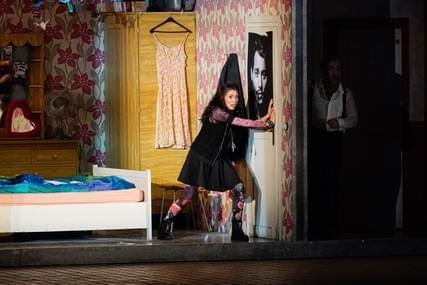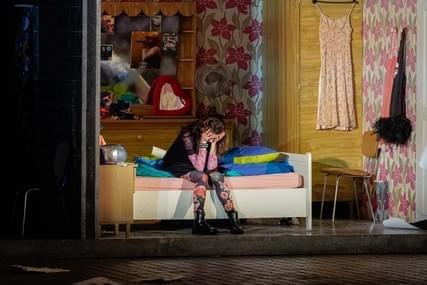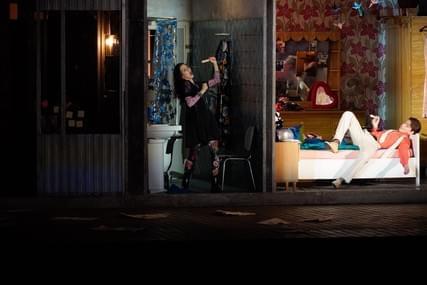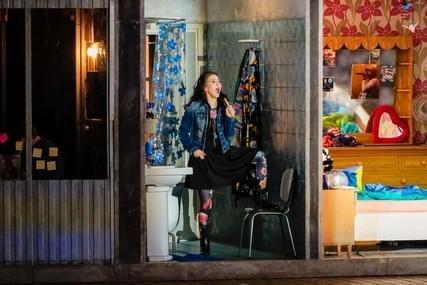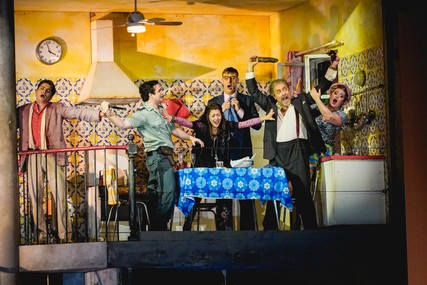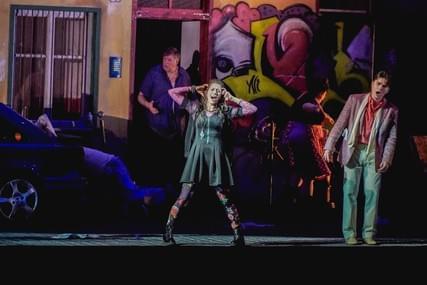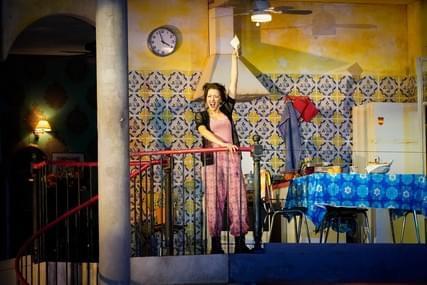Rosina in Il barbiere di Siviglia
The Star of the Show
American lirico-leggera soprano Lisette Oropesa took on the role of Rosina. She is well-loved by the Parisian audience, as she has stepped into the role of Marguerite di Valois in “les Hugenots” on very short notice last season and then stepped in as well into “L’Elisir d’amore,” combining rehearsals for the Donizetti work while performing the Meyerbeer opera at the Bastille.
All the admiration she received on this particular night was well-deserved. Her timbre is dark, round, and completely even throughout her register. She tops off this combination with amazing, ringing high notes.
She surprisingly sang the famed aria “Una voce poco Fa” in the mezzo-soprano key ( the aria is published in two different keys, with the soprano version one semi-tone higher) delivering sonorous low B naturals and C sharps. Her coloratura technique is depurated and immaculate, as well as her staccato notes and all the high interpolated high notes; it must be said that she was very cautious with variations, maintaining most of the original written lines.
Her duet with Figaro was lively and cunning, again proving her amazing control of the middle voice. Her voice was quite present during the final concertante; choosing this time to sing Berta’s lines which are written for a soprano with two chromatic ascensions to high C; here her voice shined clearly over the rest of the cast, chorus, and orchestra.
She took on her second act aria “Contra un cor” in the soprano key which is one and a half semi tones higher than the mezzo key. Her voice was constantly tasked with high Cs, which she pulled off beauifully. The rest of the aria was a masterful display of vocal fireworks well-rewarded by the audience.
She kept her polished coloratura technique and sweet timbre for the trio with Figaro and Almaviva, and for the final scene, always adding subtle variation in order to preserve the integrity of the original melody.
Oropesa was the true success of the evening, and she received a well-deserved long ovation at the curtain call.
Cavalcades à tous les étages
Installée dans un immeuble sévillan joliment décati, dont on nous révèle alternativement la façade et les intérieurs, l’efficace mise en scène de Damiano Michieletto fait cavalcader les chanteurs entre la rue et les étages. Non seulement cela ne semble pas coûter le moindre effort à Lisette Oropesa, 36 ans, marathonienne de choc à la ville comme à la scène, mais la soprano américaine, actrice très expressive autant que fine chanteuse, semble s’amuser énormément à camper Rosina en adolescente frondeuse, amoureuse et délurée.
C’est aussi à l’opéra Bastille qu’on l’avait découverte, à l’automne 2018. Éblouissante Marguerite de Navarre dans Les Huguenots de Meyerbeer — elle y remplaçait, en catastrophe et pour le meilleur, la très attendue Diana Damrau —, Lisette Oropesa y fut ensuite une délicieuse Adina dans L’Elixir d’amour de Donizetti. Son soprano radieux, vif et agile fait merveille dans le rôle moins dramatique, mais tout aussi exigeant, de la juvénile Rosina. En attendant qu’elle revienne (comme on l’espère) à l’Opéra de Paris, les Provençaux la retrouveront le 18 avril au Grand Théâtre de Provence (Aix-en-Provence), en récital avec le ténor Juan Diego Florez, et les Franciliens l’entendront les 10 et 11 juin à la Philharmonie de Paris, dans les Carmina Burana de Carl Orff.
Lisette Oropesa finally returns and for the second time to Rosina, 17 years after her debut in the role (she posted a charming souvenir photograph of youth on social networks). The character here is even younger: a rebellious and sulky post-adolescent girl in Gothic attire. The American soprano embodies it with the plausibility of a teenage movie and does not forget to channel this sparkling and luminous game in the voice. With its long breath, it passes in one sentence from a colored high to a deep bass, then goes up in agile and sensual vocalizations from the low guttural to the high, moiré or shimmering, explosive or intensely contained .
Appréciée du public parisien depuis sa Marguerite de Valois dans Les Huguenots à l’automne 2018, Lisette Oropesa compose une Rosine en tout point captivante. La jeune soprano ne manque ni de piquant ni de charme. La voix est brillante, l’aigu aisé, les vocalises sont parfaitement exécutées et la ligne de chant ornementée avec subtilité. Actrice accomplie, elle évolue comme un poisson dans l’eau dans l’univers imaginé par Michieletto.

